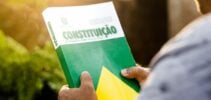The estimate is that between 23 million hectares and 55 million hectares of native areas will be deforested and could disappear, resulting in the emission of 7,6 to 18,7 billion tons of carbon, equivalent to 5 and 14 years of emissions from Brazil , or 90 and 200 years of emissions from industrial processes, respectively.
ADVERTISING
“In addition to being completely inappropriate in light of the Federal Constitution, which protects the right of indigenous peoples to their lands, the bill and the time frame thesis will also put the climate balance of the Amazon region at risk, affecting the country as a whole . We can say goodbye to the current government's zero deforestation goal and the country's commitment to reducing carbon emissions. We will come dangerously close to the “point of no return” that dozens of scientists have been advocating; These strange initiatives threaten national security”, said Paulo Moutinho, senior researcher at IPAM and coordinator of the study.
IPAM's analysis took into account 385 indigenous lands, whose ratification decree was signed after the 1988 Federal Constitution.
The researchers raised two scenarios for existing TIs: I. severe, with a forecast of 20% future deforestation on indigenous lands in Amazon and 50% for Cerrado e Pantanal; and II. very serious, with deforestation of 50% in indigenous lands in the Amazon and 70% in Cerrado and Pantanal.
ADVERTISING
The advancement of the destruction of native vegetation, predicted by the study, will have implications for the rainfall regime in the region, with consequent changes in climatic conditions across the country. The impacts on agriculture, livestock and energy generation could be particularly relevant.
Indigenous lands occupy only 13% of the national territory and are the land categories with the lowest deforestation rates (< 2%) in the Amazon region, when compared to deforestation in private areas (> 30%). However, from 2019 to 2021, in the Amazon alone, the increase in deforestation on indigenous lands was 153% compared to the previous three years. The scenario, caused mainly by the increase in land grabbing and illegal deforestation, could worsen if changes to legislation on indigenous rights are approved.
Read also
* The text of this article was partially generated by artificial intelligence tools, state-of-the-art language models that assist in the preparation, review, translation and summarization of texts. Text entries were created by the Curto News and responses from AI tools were used to improve the final content.
It is important to highlight that AI tools are just tools, and the final responsibility for the published content lies with the Curto News. By using these tools responsibly and ethically, our objective is to expand communication possibilities and democratize access to quality information. 🤖
ADVERTISING





